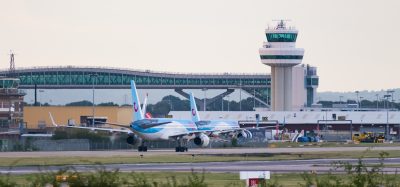Air freight traffic continues decline, whilst passenger traffic increased
- Like
- Digg
- Del
- Tumblr
- VKontakte
- Buffer
- Love This
- Odnoklassniki
- Meneame
- Blogger
- Amazon
- Yahoo Mail
- Gmail
- AOL
- Newsvine
- HackerNews
- Evernote
- MySpace
- Mail.ru
- Viadeo
- Line
- Comments
- Yummly
- SMS
- Viber
- Telegram
- Subscribe
- Skype
- Facebook Messenger
- Kakao
- LiveJournal
- Yammer
- Edgar
- Fintel
- Mix
- Instapaper
- Copy Link
Posted: 24 May 2019 | International Airport Review | No comments yet
Figures from ACI World reveal that passenger traffic growth remained resilient despite slight moderation, while freight traffic regained some of its momentum despite 2.1 per cent decline.


ACI World has revealed that the air freight industry continued to decline in March, losing 1 per cent on a year-over-year basis and finishing the first quarter of 2019 with a 2.1 per cent decline in volumes.
While the passenger market continued to post positive figures in March, ending the quarter with 4.1 per cent growth at the global level, this was below the industry’s +5.3 per cent 12-month rolling average.
ACI World Director General, Angela Gittens, said: “A sudden reignition of the trade war between the United States and China, as well as increasing tensions with Iran, are starting to put significant pressure on the air freight industry which is already affected by the volatility in the global economy. Passenger traffic has remained comparatively resilient but the slight moderation in growth has continued since it emerged in mid-2018.”
ACI collects and analyses data from a significant sample of airports that provide regular reports on month-by-month passenger and freight statistics; this forms part of the world’s most comprehensive source for airport data.
Passenger traffic
The international passenger market experienced a slowdown in traffic in March, growing by 3.9 per cent on a year-over-year basis, compared to 4.8 per cent in February. End-of-quarter growth stood at 4.8 per cent. The domestic market gained some momentum, rising by 3.4 per cent compared to 3.1 per cent last month. Its Q1 2019 growth rate remained below the international segment, at 3.7 per cent.
North America grew by 4.6 per cent in March, ending the quarter with 4.1 per cent gain on a year-to-date basis. Both domestic and international markets fared well during the period, posting 4.4 per cent and 4.6 per cent respectively.
Europe was close behind with 4 per cent on a year-over-year basis, though its Q1 result was higher, at 4.5 per cent. The region’s international passenger market slowed down compared to February, posting 4.4 per cent in March against 5.9 per cent for the month prior. The segment’s Q1 results were more than twice that of the domestic segment, at 5.3 per cent versus 2.5 per cent.
Asia-Pacific, which has been the largest engine of growth for the industry in recent years, is showing the effects of global headwinds. The region grew 2 per cent in March, with end-of-quarter results reaching 3.4 per cent on a year-to-date basis. The international passenger market propped up those results in March, at 3.4 per cent, while the domestic market only gained 1.3 per cent.
In a continuation of the past months’ trend, Africa and Latin America-Caribbean posted fairly robust growth in March, gaining 7 per cent and 5.7 per cent respectively. Q1 results were in line with those numbers, with Africa growing by 7.1 per cent and Latin America-Caribbean gaining 6.1 per cent.
The Middle East was the only region without growth in March, declining by 0.3 per cent, but Q1 results remained above zero, with a 1.1 per cent gain over the period. A continuation of ongoing geopolitical trends – the Qatari diplomatic crisis and tensions between major regional players and some Western nations – is having an impact on the region’s traffic.
Freight volumes
In March, international freight regained some of its momentum from its 6.7 per cent decline in February, only falling 1.3 per cent. Q1 2019 results for the segment remained in the negative, at -3.2 per cent against 2018. Domestic freight fared better, standing at 0.1 per cent for the quarter due to the strength of the North American market (+0.5 per cent).
Of the major regional markets, only Europe posted growth in March, gaining 0.4 per cent. End-of-quarter growth remained in the negative, at -1.5 per cent, driven down by falling international freight.
North America barely entered a decline in March, losing 0.1 per cent against last year. Q1 results remained positive, at 0.8 per cent despite losses (-1.8 per cent for the period) in international freight.
Asia-Pacific’s air transport sector has been under pressure from the ongoing trade war with the United States and resulting disruptions in a number of industries’ supply chains. Air freight declined 3.3 per cent in March, and Q1 2019 results stood at -5.5 per cent. Both domestic and international freight posted similarly negative figures in the region.
Latin America-Caribbean freight traffic also declined in March, by 1.5 per cent. The region’s end-of-quarter result was -0.9 per cent. Africa and the Middle East were the only regions with freight growth in March, gaining per cent and 2.1 per cent respectively.
Related topics
Aeronautical revenue, Air freight and cargo, Capacity, Passenger volumes


















